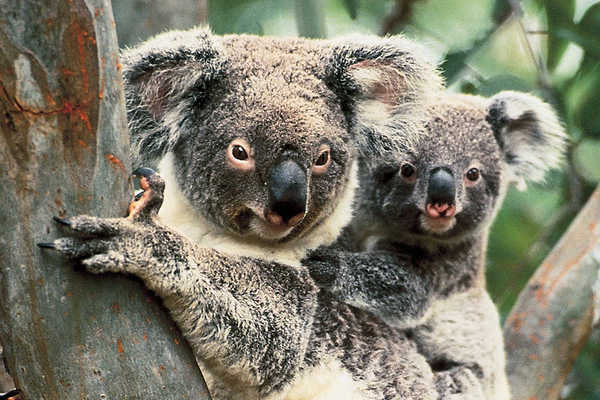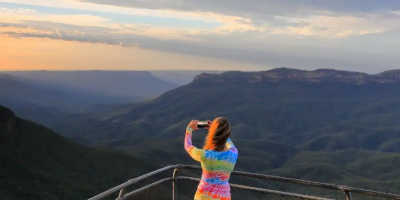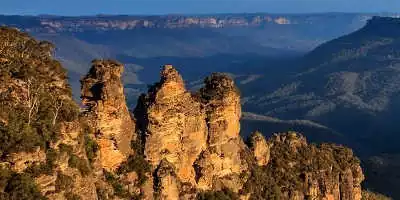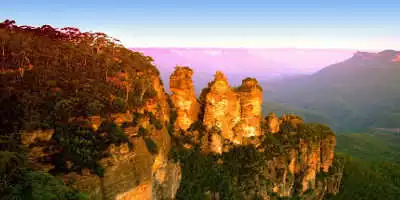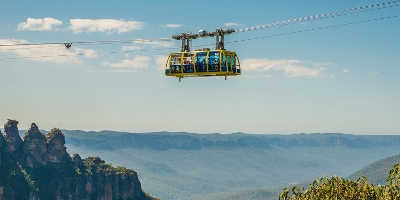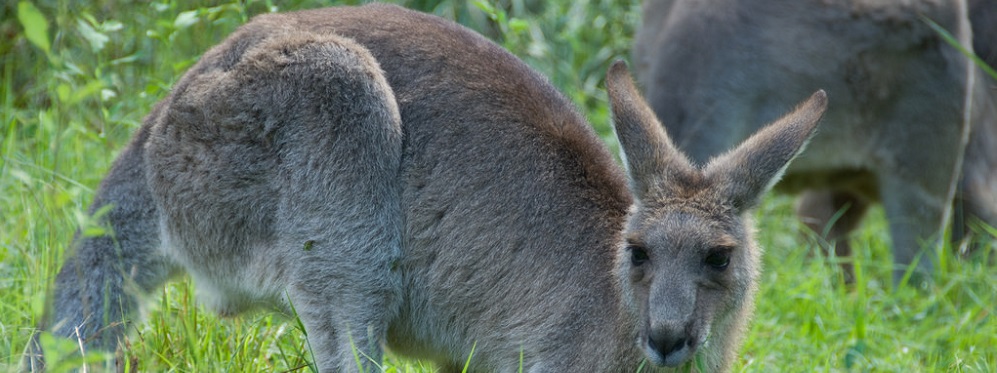
The Wildlife of the Blue Mountains
Written by: Cameron Ward
Published: 01/03/2017
Reading time: 6 mins
Discover the incredible wildlife hidden within the lush Blu Mountains!
The Blue Mountains boast some of Australia’s most magnificent scenery. Here, sprawling velvet peaks seem expand endlessly to the horizon, encompassing lush rainforests, breath-taking natural wonders, and an abundance of stunning views and wildlife.
In 2000, the Blue Mountains were listed as a World Heritage Site and today, is home to an incredible amount of native and non-native creatures.
In fact, there are more than 400 different types of animals that reside amongst the picturesque gorges and the expansive tablelands of the Greater Blue Mountains area, including a number of endangered and threatened species.
-
Tiger Quoll
When you’re travelling through, keep your eyes peeled for species such as the tiger quoll. Known as the largest living carnivore on mainland Australia, being the biggest quoll at 50 per cent bigger than the average species. It has a very distinct feature, with soft brown fur and white dots, with a similar shape to a possum. The Quoll species were once a common animal in regions of Australia, but after the invasion of development and the cane toad, a lot of species have become extremely endangered, with the Tiger Quoll being one of them. They are night hunters, so if you are out walking after dark, keep a look out for these incredibly rare creatures.
-
Yellow-Bellied Glider
These cute little fluffy animals are well worth the spotting. With large floppy ears, a pink nose, and yellow tinted fur that has coined their name, these Yellow-Bellied gliders undoubtedly win the cuteness award in the Blue Mountains. They live in small family groups, hanging out in the high branches of the Blue Mountains’ trees. If you are having trouble spotting them, simply follow the distinctive high-pitched shriek that subsides into a throaty rattle and set off for the nearby gliders.
-
Green and Golden Bell Frog
It is safe to say this is one of the prettiest frogs you will ever encounter. With sparkling golden streaks blending together with the iconic frog green, the Green and Golden Bell frog ranges from 45 to 100 millimetres. It is local in the Blue Mountains’ water regions, particularly close to the bulrushes.
-
Blue Mountain Water Skink
This medium-sized lizard is a species only found in New South Wales, hanging out about in the area’s swamps. With dark black bodies striped with yellow and white along the length of its body. Although this may be a rare spotting due to its fast speed, seeing the most endangered creature on our list is well worth the lookout.
-
Dingo
The largest predator in the region is the native dingo, a wild type of dog that hunts for the local grey kangaroos and other prey they can get their claws on. Although it is quite rare to ever see these creatures while visiting, its still a good idea to keep a look out for them!
-
Koalas
No trip to Australia is complete without seeing the iconic Koala. Even the beautiful Blue Mountains is home to them, due to the large ratio of eucalyptus trees, which are the koala’s favourite and only food choice. As they sleep 18 hours a day, they can mostly be found in the high tree branches snoozing the day away. Because of their dull grey colour and their ability to reach crazy heights, it can be hard to find them. But keep an eye on the gum trees of the valley and maybe you’ll spot a few!
-
Kangaroos
The second favourite Australian animal; the Kangaroo! Found in small herds, the kangaroo usually roams about the clear grassy areas of the Blue Mountains. The best time to see these creatures in the early hours of the morning, as the mob are most active, and roam the grassland for their breakfast. Other times of the day they are still visible but are usually simply relaxing in the shady trees. It’s not just kangaroos around the valley, but wallabies too, which essentially smaller and cuter kangaroos.
-
Bats
If you are trekking through the valley after sunset, you may hear the flapping of wings overhead. These aren’t birds flying overhead but actually bats! With the creatures hunting the area and stretching their wings. All of them are typically a dark black colour, to help them blend into the night. However, look up with the setting moon and you’ll see their glorious silhouette soaring the sky. There are a total of 16 different types of bats found in the Blue Mountains, all ranging in shape, size, and characteristics. Out of all the bats, there are numerous which are endangered, including grey-headed flying fox, the east coast Freetail-bat, eastern false pipistrelle, large-eared pied bat, eastern bent wing-bat, and greater broad-nosed bat.
-
Birds
But it’s not just mammals, marsupials, and amphibians that call this area home – there are plenty of colourful bird species here, too. Birdlife International has named the Blue Mountains as an Important Bird Area because of its high number of rare and native species. In fact, the peaks of the mountain ranges support the highest number of rock warbler in the world, but there are also plenty of flame robins, diamond firetails, and pilotbirds you can catch a glimpse of.
If that wasn’t enough, the endangered regent honeyeater can also be seen there regularly, as well as the rare yellow-faced honeyeater during the migration season.
Where you can see them
It’s safe to say there are hundreds of animal-spotting opportunities in the Blue Mountains, especially at the Featherdale Wildlife Park, where you can get up close and personal to all manner of species, including native koalas, kangaroos, and wombats.
If you’re a keen animal lover who is looking to explore the incredible amounts of wildlife and natural beauty that Australia has to offer, the Blue Mountains should definitely be on your list. From the velvet peaks of the ranges to the ancient plant-filled valleys below and the designated animal hotspots that are dotted around, there are endless opportunities to spot creatures in all shapes and sizes.

